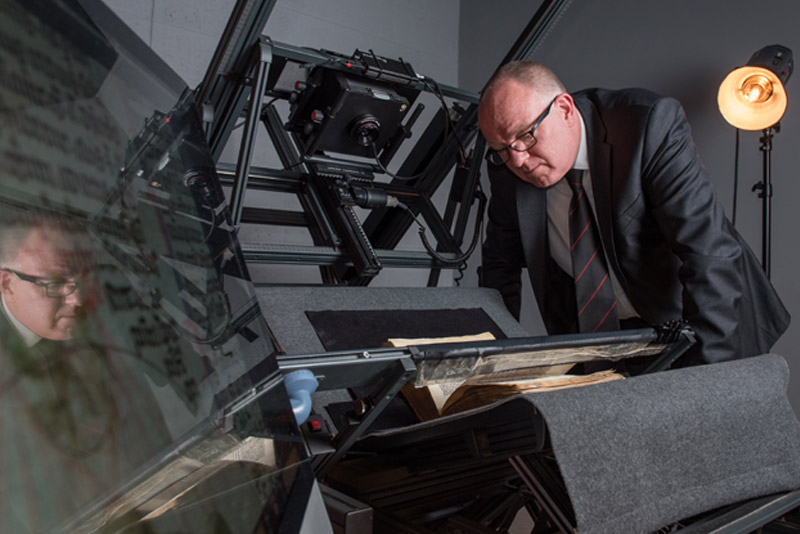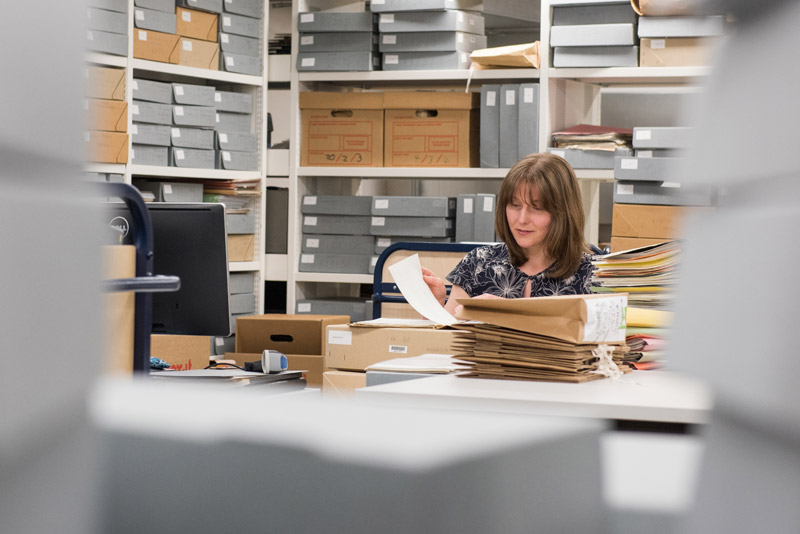Driving digitisation at the Bodleian
For over 30 years, the Bodleian Library has been actively pursuing a programme of digitisation, in a concerted effort to open up its vast and extraordinary collections to users all around the world. The result is over 129.2 million digitised images freely available to the world.
But providing this level of access to readers does not come without its costs. As the range of demands on the Bodleian’s resources have increased, so too has the importance of philanthropy, with much of the digitisation work that has taken place made possible by the library’s supporters. ‘Philanthropy is critical to enabling us to rise to the challenge,’ says Richard Ovenden, Bodley’s Librarian and the institution’s leading advocate for digitisation and digital preservation.
The ability to access material wherever it may physically be, 24 hours a day, via the internet, is a great boon to research.Richard Ovenden
Oxford alumnus Leonard Polonsky is one such supporter. ‘Dr Polonsky has been systematic in helping to enhance and amplify the Bodleian’s work through the power of digital technology,’ says Richard. In 2012, a generous donation from The Polonsky Foundation enabled a collaborative initiative between the Bodleian and the Biblioteca Apostolica Vaticana. Remarkably, by the time of the project’s completion later this year, more than 1.5 million pages from their collections will have been made freely available in digital format.
‘We established protocols, standards, and other ways of working which have enabled some very early material from both collections to be painstakingly digitised,’ explains Richard. Now, scholars can run algorithmic searches, use image recognition techniques, and annotate manuscripts. ‘It’s like having these materials on your desk, even though some of them are several thousand miles away in Rome!’
While the benefit of digitisation to teaching, research and conservation within the sector is clear, it is also worth noting the huge opportunities provided for access to non-scholarly readers. ‘They may not be formally registered scholars, but their minds are just as enquiring,’ says Richard. ‘Now, the interested general person has access to the treasure rooms of the great libraries of the world, in ways which were unimaginable 30 years ago – it’s an incredible thing.’

Developing digital archivists
By striving to keep pace with the digital revolution, the Bodleian is also helping to address a serious and concerning skills gap that has opened up across the libraries and archives sector.
Every day, incredible amounts of digital information are being produced – from blogs and photographs, to sound, video recordings and social media. However very few archivists across the sector have the knowledge or the experience required to ensure that these digital sources are secured for future generations. The consequence? A vast and growing quantity of valuable, yet inaccessible, digital content.

‘If you were an archivist working 50 years ago, the skill set that you acquired in your training didn’t need to evolve much to keep pace with the changes in the kinds of materials that you were bringing in, and what people wanted to do with them,’ explains Susan Thomas, Head of Archives and Modern Manuscripts at the Bodleian Libraries. ‘But the landscape is shifting much more quickly now, and people need to be more agile.’
Thanks to philanthropic support from the Heritage Lottery Fund and the Carnegie Corporation of New York, the Bodleian is seeking to meet this challenge head on, training graduates with the skills badly needed, but currently lacking, in the archival workforce. ‘We want to bring new people into the sector who can understand the traditional skills that archivists have long practiced, but also what’s required to preserve digital material,’ says Susan.
During their tenure at the library, trainees of the scheme will work predominantly on hybrid archives, which include manuscript and other analogue materials requiring digitisation, as well as texts and recordings that have been produced in digital format – otherwise known as born-digital.
A unique feature of the programme is the ability to train towards a formal qualification as well as gather really solid hands-on practical experience in a library.Susan Thomas
Compared with the analogue world, the challenges associated with archiving these types of material are far more complex. As Richard explains: ‘they are more costly, require different ranges of skills, different technologies, different approaches, and different sets of polices.’ Certain audio-visual content, for example, can have a limited life span. Add to that the changing software environment, increasing use of the cloud, social media and servers with no easily determinable location, and the challenges of accumulating, preserving and making coherent digital material becomes even more daunting.
Training archivists to manage born-digital is of critical importance for the future understanding of our present age. ‘My heart is in building collections for the future,’ says Susan. ‘It’s about making sure that there will be a good collection here in 50 years time that represents this period of our history. People will be able to write about the 21st century because we’ve collected the materials that will enable them to do it, and I think that’s hugely important.’